Brown Dobermans: features of color and care for them
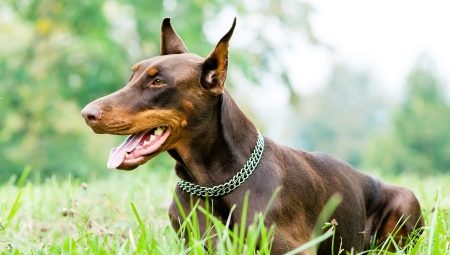
The Doberman Pinscher is an elegant and powerful dog with an excellent physique and a sharp mind, it is considered a noble breed. This fearless and vigilant breed proudly ranks among the best protective dogs in the world. Many breeders give preference to this particular breed, choosing brown Dobermans, taking into account the peculiarities of color and care for them.
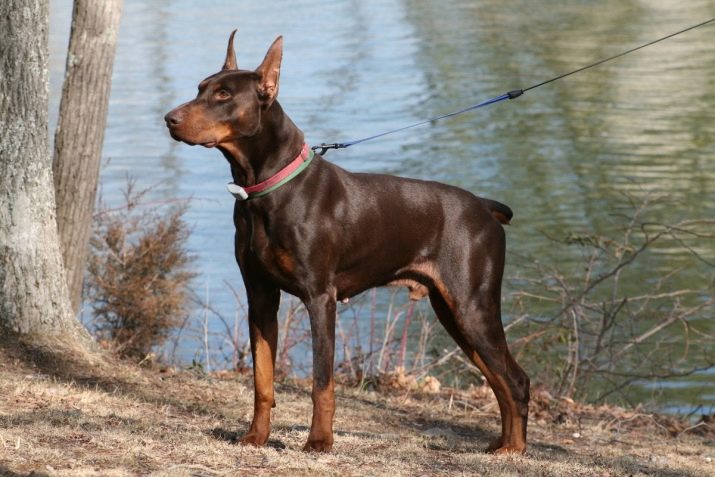
History
A German named Louis Dobermann has been credited with breeding the Doberman Pinscher since the late 1800s. This man was a tax collector and wanted a ferocious guard dog to accompany him everywhere. Doberman always took his dog with him.
No one knows for sure, but the Doberman Pinscher is believed to have crossed many breeds to produce the Doberman Pinscher. Presumably, the breeds for crossing included the Rottweiler, German Pinscher, Great Dane, German Shepherd, Manchester Terrier and English short-haired greyhound.
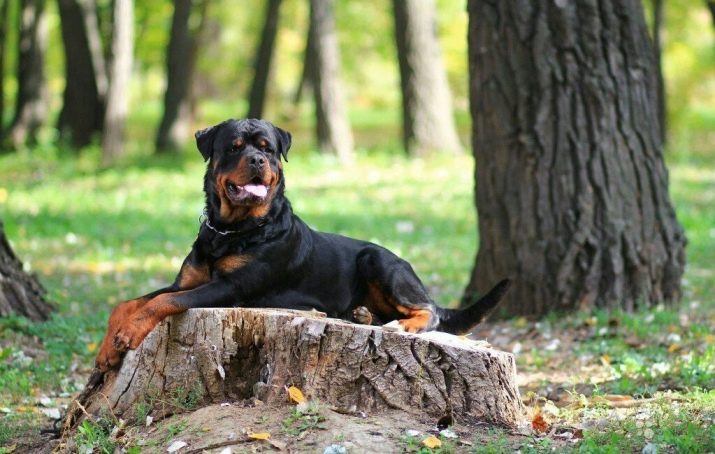
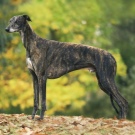
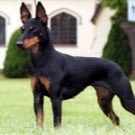
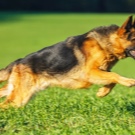
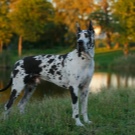

Peculiarities
If you are planning to purchase a Doberman Pinscher, it is important to know all the colors and types that exist, as well as the typical character traits of each, so that you can make the right choice. There are seven possible colors for the Doberman pinscher. It is known that there are only six of them, because today there is a complete albino only in theory and has not yet been confirmed. However, many people firmly believe that they exist.
In a Doberman, there are two genes related to color, a black gene and a color dilution gene. These two genes can produce four color combinations. These four combinations are the only colors recognized by the English Kennel Club: black, red, blue and fawn with a splash of brown. However, there is also a white color, which the English Club admits exists but is not considered a "standard" color.

Each dog has its own unique temperament, but most Doberman owners claim that certain color types generalize the character traits of dogs.
Color
In addition to the basic coat color, this breed is known for its prominent brown spots. Despite the different colors, almost all variants have this traditional speck. Some American Doberman breeds even have a small white patch in the chest area.
- American Dobermans: According to the Kennel Club of America, small brown specks should be clearly defined and appear over each eye, muzzle, throat, chest, all four legs, and tail. The white patch on the chest should not exceed 1.27 cm.
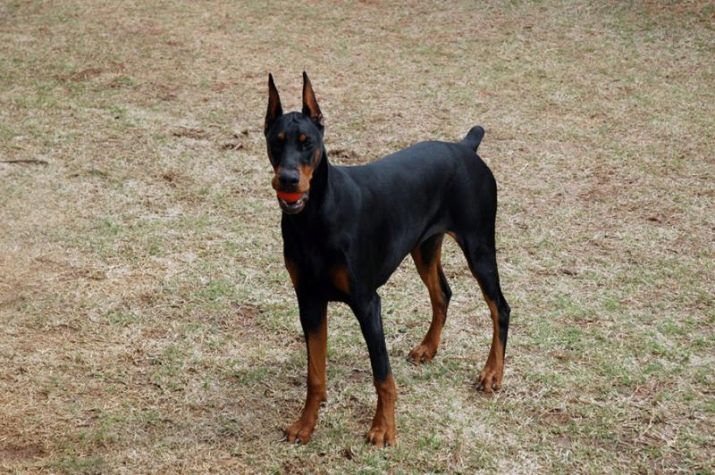
- European Dobermans: brown spots should be clearly defined and located on the face, cheeks and the top of each eyebrow. Brown color should also appear on the throat, on both sides of the chest, between the ankles and on the feet, on the inner thighs, on the forearms and under the tail. In fact, the color is the same as that of the American Doberman, only a small white spot is not considered the standard for a European.
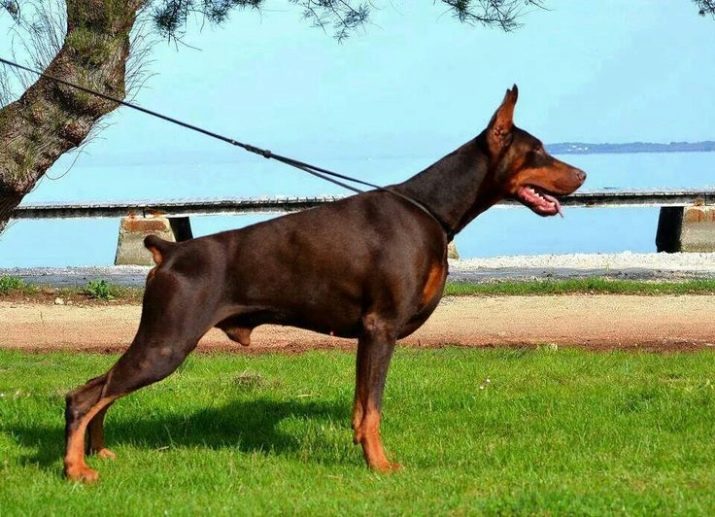
- Red or chocolate doberman... This color is the second most common. The coat is light brownish red. This breed is considered intelligent and active. Dogs are very loyal, trusting and playful. All of this makes them wonderful family members, not to mention the extra protection they provide if someone they love is threatened.
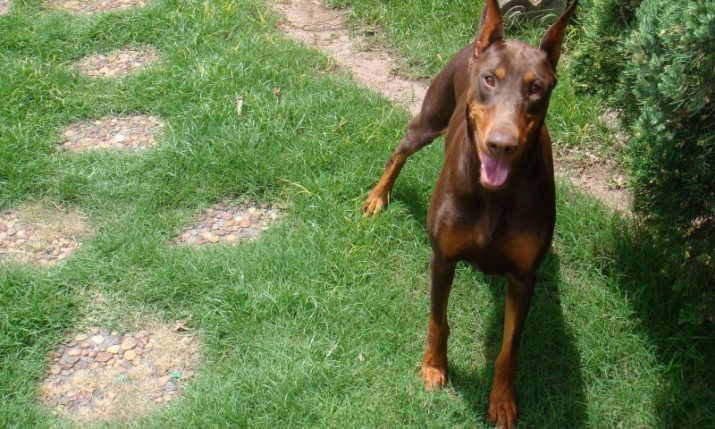
Of course, some may perceive his unwillingness to grow up as a negative trait. This breed will behave like a small puppy until about three or four years old. However, a lot depends on how early and how well you can socialize your dog.
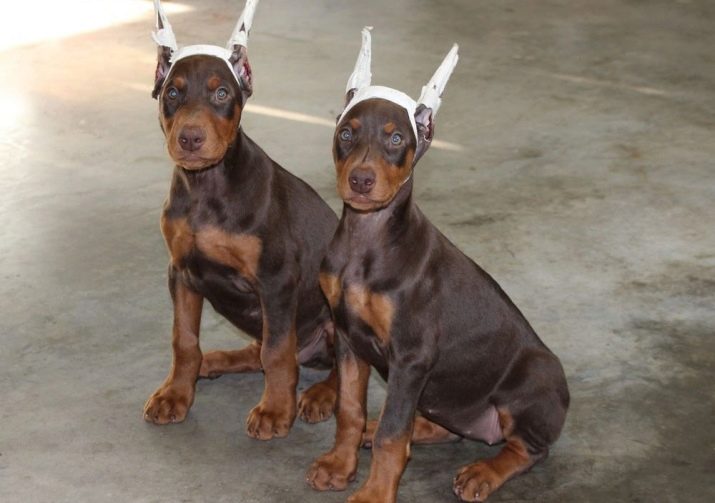
Before you start breeding this breed or just get a puppy, be sure to familiarize yourself with all the disadvantages of Dobermans, and avoid bad breeders if possible.
How to care?
Firstly, as soon as a Doberman puppy appears in your house, you should immediately take him to the veterinarian and get vaccinated. According to the Society for the Prevention of Cruelty to Animals, Dobermans are especially vulnerable to the deadly virus if not properly vaccinated. The initial vaccination is given at 6 weeks of age and every four weeks until the dog is 16-20 weeks old.
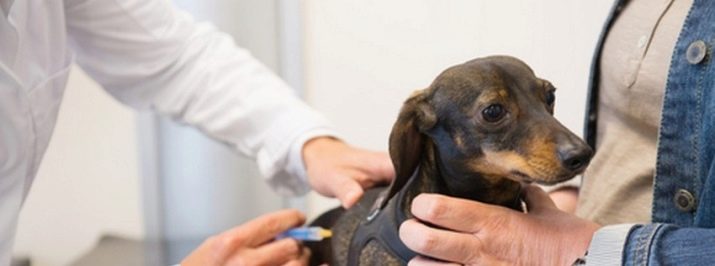
You need to take the dog to the veterinarian so that the specialist can trim the ears and dock the tail. A cosmetic procedure such as cropping the ears changes the appearance and makes them stand up straight, which requires surgery.

You need to train your Doberman on a daily basis to prevent the development of destructive behavior. This breed requires a significant amount of exercise, more than other breeds, so you need to play outdoor games, use toys for the dog and take quick runs to tire the dog.Dobermans are prone to impulsive behavior. If they are not provided with an outlet for their stored energy, they may become stressed. Exercising and walking in the fresh air can prevent these problems from occurring by helping to relieve anxiety.
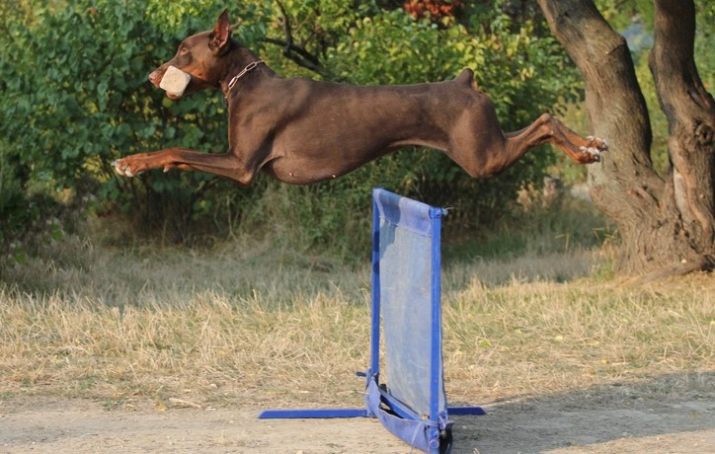
Dobermans are intelligent dogs that require mental stimulation, and only training can provide this.
Groom your Doberman with a special wire brush to keep debris out of his coat. Short hair requires occasional brushing, and Dobermans usually do not shed much. Wipe the coat with a damp cloth and apply a little conditioner to make the dog's coat shine. Bathe your dog only when necessary.
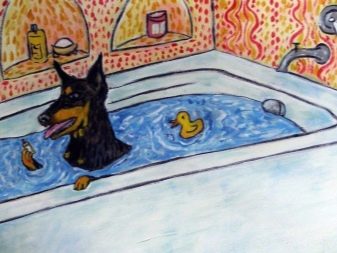
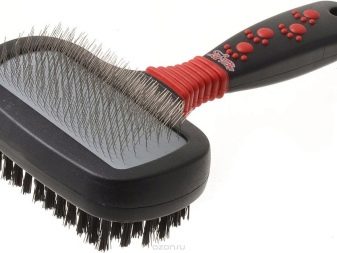
Diet
Feed your Doberman Pinscher a high-calorie diet food with regular exercise. Make sure your nutrition is correct. Choose dry food that is free of soy and should be soaked before serving to the dog to prevent bloating. - This problem is quite common in large breeds, including the Doberman. Remember, this is very dangerous because bloating can cause stomach swelling.
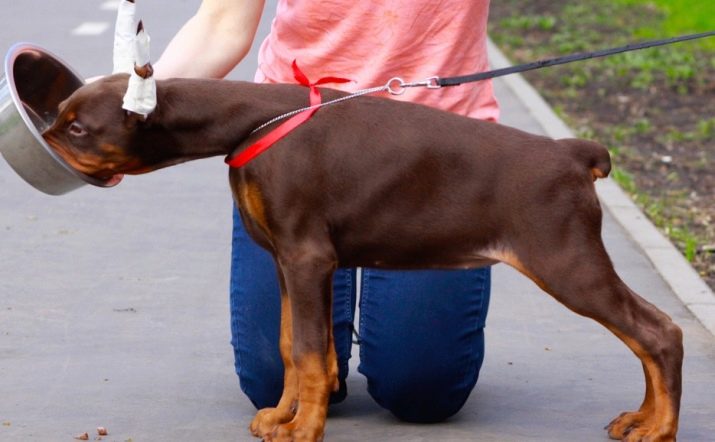
Try not to feed your Doberman for one hour before or after your workout to prevent bloating.
Recommendations and Tips
- In cold weather, keep your Doberman indoors, as the dog can easily catch cold, the short coat does not warm the dog's body enough. Buy a sweater or coat for your dog to wear in cold weather.
- Give your Doberman chew toys containing a treat to distract him during the day when you are not at home. This will prevent the development of destructive behavior in this breed.
- Take your dog to the vet regularly to check for common health problems for this breed - cancer, hyperthyroidism, hip dysplasia, von Willebrand disease, and dilated cardiomyopathy.
- If you can't play with the Doberman or exercise in the fresh air as much as he needs, get him to jog on a treadmill to get the dog to do the exercises. This can prevent impulsive and destructive behavior.
- Socialize your Doberman from an early age to prevent further aggression problems towards other people and animals. Let your young dog play with other dogs and see a lot of people as he walks. You can start at 12 weeks.
- This intelligent, obedient dog can be trained to be a guide for the blind.
- You don't have to take your dog to the vet to have its ears and tail trimmed. You can leave everything in its natural state.
- Teach your Doberman Pinscher to participate in agility challenges. This is not only physical, but also mental stimulation, which will definitely be beneficial.
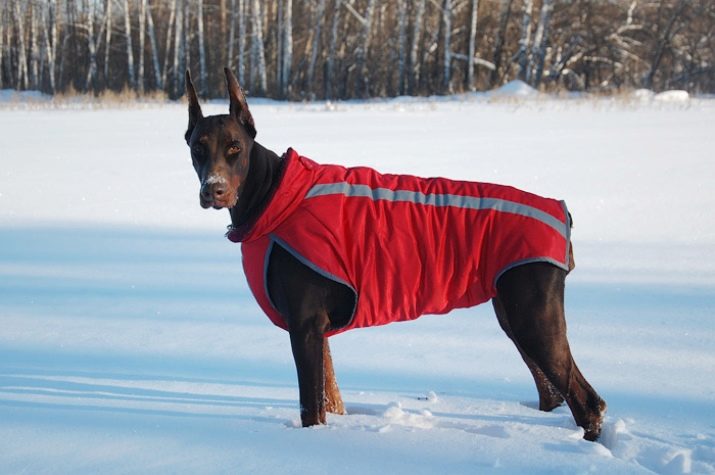




For the peculiarities of raising and training a Doberman Pinscher, see the video below.


































